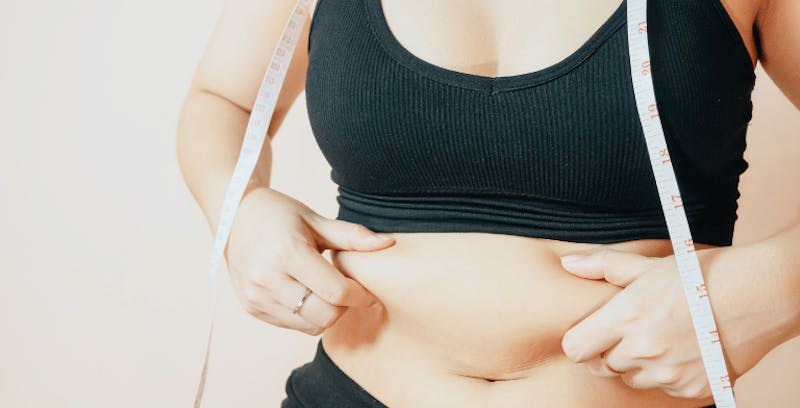
Fat grafting, known as fat transfer, is a cosmetic procedure that has been gaining popularity in recent years. The process involves transferring fat (autologous fat; meaning from one’s own body) from one area of the body to another to enhance volume and contour. It is innovative and has versatile techniques with numerous applications, including facial rejuvenation and body contouring.
This procedure is not a one size fits all treatment, and the techniques and applications used will vary from patient to patient to ensure optimal results and a safe operation. And just like any other medical or cosmetic procedure, knowing all your options is essential to make the best decision for your body, health, and goals.
This article will discuss the various techniques and their applications in facial rejuvenation and body contouring. We will also explore the benefits and potential risks of the procedure, as well as the future of fat grafting in the cosmetic industry.
What is Fat Grafting?
Fat grafting is a surgical procedure that involves removing excess fat from one area of the body, such as the abdomen or thighs, and transferring it to another area of the body that requires additional volume, such as the face or buttocks. The procedure has been used for over a century, but recent advances in technology and techniques have made it more popular and effective than ever before.
The procedure begins with removing fat from the donor site, typically through liposuction. The harvested fat is then purified to remove any impurities or excess fluids. Finally, a small, blunt cannula injects the purified fat into the recipient site.
Fat Grafting for Facial Rejuvenation
Facial rejuvenation is a term used to describe a range of cosmetic procedures that aim to restore a youthful appearance to the face. Fat grafting is one of the most effective techniques for achieving this goal, as it can add volume and contour to areas of the face that have lost volume due to aging or other factors.
The most common areas of the face that can benefit from the procedure include the cheeks, temples, and under-eye area. By adding volume to these places, the procedure can create a more youthful and refreshed appearance while smoothing wrinkles and fine lines.
One of the main benefits of fat grafting for facial rejuvenation is its long-lasting results. Traditional facial rejuvenation procedures, such as dermal fillers or facelifts, require repeated treatments to maintain results. With this procedure, the transferred fat becomes a permanent part of the body, providing long-lasting results without additional treatments.
Fat Grafting for Body Contouring
Body contouring involves various cosmetic procedures designed to improve the shape and appearance of the body. Fat grafting can be an effective technique for body contouring, as it can add volume and contour to areas of the body that may be lacking in volume or shape in a more natural-looking way.
Body contouring with fat grafting is commonly used for the buttocks and breasts. Adding volume to these areas can create a more contoured appearance while improving overall body proportions. However, is not limited to these areas.
Fat grafting for body contouring is also very versatile. The procedure can be tailored to each patient, allowing customized results that meet each patient’s needs and goals. Fat can be grafted to almost any part of the body that would benefit from increased volume, including muscles.
Fat Grafting Techniques
Several fat grafting techniques can be used for facial rejuvenation and body contouring. The most common methods include the following:
Coleman Technique
The Coleman technique, named after its inventor, Sydney R. Coleman, is one of the most popular fat grafting techniques for facial rejuvenation. The technique involves using a small, blunt cannula to inject small amounts of fat into the desired areas of the face.
The Coleman technique is highly precise and can produce natural-looking results. It also has a low risk of complications, such as uneven fat distribution or damage to surrounding tissue.
Structural Fat Grafting
Structural fat grafting is a technique that injects larger amounts of fat into specific areas of the face or body to create more significant volume and contour. This technique is often used for body contouring procedures, such as the Brazilian Butt Lift and facial rejuvenation.
Structural, aims to create a natural-looking result that blends seamlessly with the surrounding tissue. This technique requires high precision and expertise to achieve optimal results.
Microfat Grafting
Microfat grafting is a technique that involves injecting small amounts of fat into the desired areas using a fine-gauge needle. This technique is normally used for facial rejuvenation procedures, such as adding volume to the lips or smoothing out wrinkles around the mouth.
This produces natural-looking results and has a low risk of complications. However, it is more time-consuming than other techniques.
Nanofat Grafting
Nanofat grafting is similar to microfat grafting but involves injecting even smaller amounts of fat into the skin using a fine-gauge needle. This technique is often used for facial rejuvenation procedures, such as improving skin texture and reducing the appearance of fine lines and wrinkles.
Benefits of Fat Grafting
Fat grafting has many benefits for facial rejuvenation and body contouring, making it a preferred technique for achieving specific results.
Natural Looking Results
Fat grafting uses the patient’s natural tissue, meaning the results are highly personalized and natural-looking. This is especially important for facial rejuvenation, where subtle changes can significantly impact the face’s overall appearance. In addition to improved facial volume, fat grafting can improve the overlying skin quality, adding to the rejuvenating affect.
Long-Lasting Results
Fat grafting produces long-lasting results, as the transferred fat becomes a permanent part of the body. Patients can enjoy the procedure’s benefits for many years without repeated treatments.
Versatility
Fat grafting is a versatile technique for various cosmetic procedures, including facial rejuvenation and body contouring. This allows the procedure to be tailored to each patient and customized results that meet each patient’s needs and goals.
Regenerative
In addition autologous fat has regenerative properties from the abundant stem cells naturally occurring in the fat. Aesthetically, stem cells can improved skin texture, and functionally stem cells can be used to promote healing of acute and chronic injuries and wounds of many kinds. The applications are nearly limitless.
Low Risks of Complications
Fat grafting has a low risk of complications, as the procedure uses the patient’s own natural tissue. This reduces the risk of allergic reactions and other complications associated with traditional cosmetic procedures.
Possible Risks and Complications
While fat grafting is generally considered a safe and effective procedure, there are some risks associated with the procedure technique.
Uneven Distribution of Fat
One of the most common complications of the procedure is the uneven distribution of fat. This can occur if the transferred fat does not integrate properly with the surrounding tissue or if too much fat is injected into a specific area.
Infection
There is a risk of infection with any surgical procedure, including fat grafting. Patients are typically given antibiotics to reduce the risk of infection, but it is still possible for an infection to occur.
Damage to Surrounding Tissue
Fat grafting involves injecting fat into the body using a cannula. If the cannula is not inserted correctly, it can cause damage to surrounding tissue or organs.
Resorption of Fat
In some cases, the body may reabsorb the transferred fat over time. This can lead to volume loss in the treated area, requiring additional treatments to maintain the desired results.
Anesthesia Complications
This procedure typically requires the use of anesthesia, which carries some risks. Patients may experience an allergic reaction to the anesthesia or other complications related to the administration of anesthesia.
Bleeding or Hematoma
There is a risk of bleeding or hematoma formation with any surgical procedure, including fat grafting. Patients may experience bruising or swelling in the treated area, which typically resolves within a few days to a week after the procedure.
The Bottom Line
Undergoing fat grafting for facial rejuvenation or body contouring can give you the natural, long-lasting results you’re looking for. However, it’s essential to ensure that it’s the right procedure for you by consulting with a licensed plastic surgeon who can review your concerns and goals, qualify you as a candidate, and determine the best technique.
If you’re ready to start, your next step is booking a consultation with a surgeon. Leif Rogers, MD, is an Ivy League-educated, board-certified plastic surgeon and a standing American Society of Plastic Surgeons member. If you’re considering fat grafting, get in touch with his team to schedule a consultation today.


